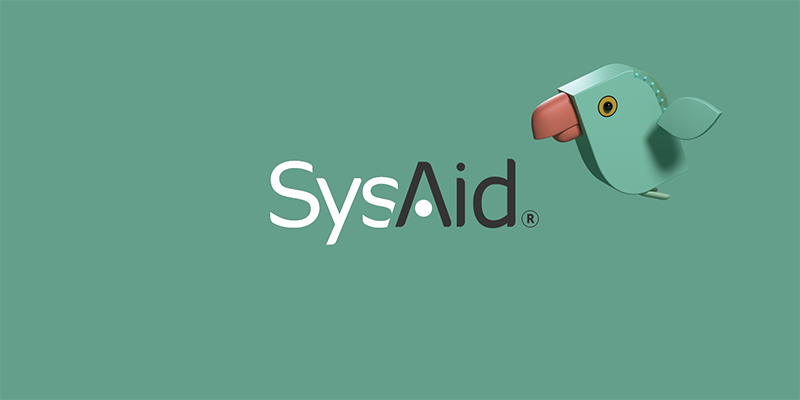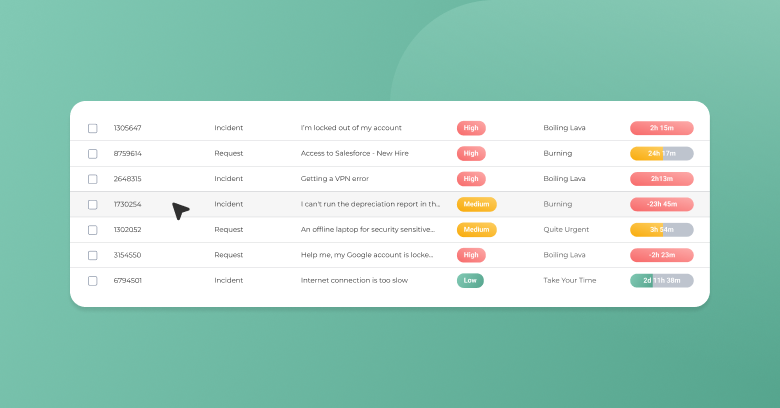5 Tips for Creating a Successful Service Catalogue

A service catalogue offered as a self-service facility can bring a number of benefits to both the IT organization and their customers. For example, it can provide IT with an opportunity to streamline the interface between itself and end users. And in doing so, IT can potentially improve business user productivity and reduce costs. It sounds almost too good to be true. By providing end users with a go-to hub for “everything IT”, you can take the strain off the service desk and keep your IT customers happy by giving them another option. No more waiting in call queues. Now they can order services and get status updates at the click of a button. Do it right and you have an efficient digital interface for business users. Do it wrong and all you end up with is another piece of expensive shelfware. The truth is that many service catalogue projects fail to deliver the predicted benefits because they are handled as technology projects.
Start with Business Benefits
Thinking about what the business needs should be the starting point for any IT project – and a service catalogue is no exception. A service catalogue is an end-user tool, so it needs to work for end users. What IT people think it should look like doesn’t really matter. They don’t have to use it.
Ultimately it’s about improving business user productivity by making it easier and faster for business people to source the technology they need to do their jobs better, not reducing IT costs by forcing them through an automated channel. A reduction in IT costs is a bi-product of a successful service catalogue, not the primary objective. In most cases, an IT service catalogue that is built purely to serve ITs’ purposes is likely to become shelfware because business people simply won’t use it.
Involve Business People – It’s Their Service Catalogue
It is of the highest importance to engage the end user community from the start to give your service catalogue a better chance of success. After all, it’s their service catalogue. Getting the business involved might prolong the implementation timescale, but it’s better to take your time and do it right than end up with a tool that nobody will use.
The first job for IT is to explain exactly what it is – in business language. The most important question to answer is “what’s in it for me?” – how will it benefit business people. If IT can communicate this well, business people will back the implementation and provide feedback which will guide the early stages of implementation. Questions you should think about:
- Do they actually want a service catalogue?
- Do they understand the value in it?
- Can they envision using it instead of calling in to the service desk?
- Is the end user community familiar with web portals and how they work?
For some organisations it just might not fit, so it’s best to get a handle on what uptake might be like as soon as possible. The user community should be involved throughout the process to ensure the end result is aligned with what they need – and what they can use. Think “are we building the right service catalogue” before “are we building the service catalogue right”.
Design for End-User Experience, Not IT Cost Reduction
Business people are focused on optimising their own productivity, so they’re always seeking the line of least resistance. If your service catalogue is easier and faster to use than calling in to the service desk, they’ll use it. If it’s not, they won’t. Usability is the number one factor for creating a service catalogue that business people want to use again and again. It has to be quick, intuitive and frictionless. Too often, IT people make assumptions about the technical skills of the users they support, so it’s important to validate a prototype of the tool using a user beta group before even thinking about launching it to the whole community.
You only really have one shot at launching a service catalogue, so running some upfront prototyping is a good way to make sure it’s a viable end product. If it doesn’t do the job for your end users, they will revert to default behaviour – calling the service desk – and it becomes exponentially more difficult to “channel shift” them back over to your service catalogue. You have to take a truly customer-oriented approach, and remember that an alternative route to services is only a phone call or an email away, so the service catalogue needs to be the most efficient of a range of options.
Gamification Helps Drive Uptake, But Don’t Bite Off More Than You Can Chew
Just like any other technology, “build it and they will come” is not a mantra you can rely on. People are creatures of habit and changing habits takes effort. People have to be motivated to try new things. Curiosity might get your service catalogue a first visit but usability keeps them coming back. If end users get the positive outcomes they’re looking for from it they are more likely to return, but old habits die hard.
Gamification can add an extra level of motivation by rewarding end users with points every time they use the service catalogue instead of calling the service desk. However, this creates another challenge for IT – integrating game mechanics into the service catalogue to operate a reward system. Most organisations haven’t got to grips with gamification yet so launching a gamified service catalogue is often too much too soon. As part of your planning, you should devise a short and long-term strategy for optimising uptake of the system. Gamification is a proven strategy for driving long-term engagement, so you should consider it as an option for driving success in your service catalogue initiative.
A Service Catalogue Is a Service in Itself
A service catalogue needs to be treated like a service, not a technology project or an application. A technology project has an end point. An application needs only the occasional upgrade. Providing digital access to IT services and information is itself a service. It is a service that end users want. That’s not going to change, so once you have one, a service catalogue becomes a permanent fixture.
As an ongoing service, your service catalogue will need to be monitored and managed as such. It should be managed for availability, capacity and performance, and it should be subject to continual service improvement, just the same as any other service. There is always room for improvement. It’s a good idea to set up a steering group (comprised of stakeholders from IT and the business), meeting regularly to discuss performance, changing business needs, and how things can be done better.
Conclusion
As ever, technology should be deployed with a clear business purpose behind it. Too often the IT department takes a technology-oriented approach and focuses on the “what” without considering the “who” and “why”. It’s also important to remember that deploying technology to end users is very different from deploying it amongst IT people. A service catalogue might be part of IT’s service management system, but it is a part that is exposed to end users – a very different community. IT needs to take an “outside-in” approach to the process – putting themselves in the end user’s shoes – to ensure a service catalogue is fit for purpose.
Please share your thoughts in the comments or on Twitter, Google+, or Facebook where we are always listening.
Did you find this interesting?Share it with others:
Did you find this interesting? Share it with others:









